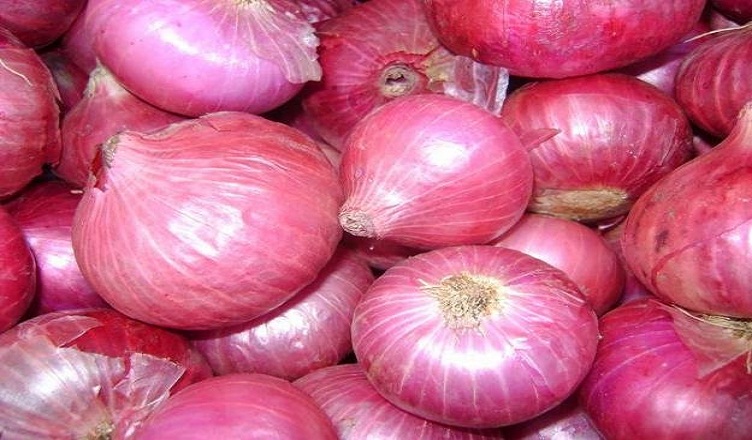(COLOMBO, LANKAPUVATH) –The Cost of Living Committee has advised the state-owned wholesale network Lanka Sathosa to purchased well-dried big onions from farmers at a price of Rs. 80 per kilogram.
The Hector Kobbekaduwa Agrarian Research and Training Institute in a report points out that there may be a 50% drop in harvest of big onions this year in comparison to last year since by July this year, only 1471 hectares had been cultivated in the Yala season although it was expected to cultivate 5249 hectares of big onions.
The decline in the number of cultivated land in the Yala Season 2018 and the consequent decline in productivity is mainly due to the drought situation prevailing in many districts of the country, destruction of many seed nurseries due to excessive rain, increase in production costs, farmers not cultivating the land and delay in Yala season due to lack of rain at the beginning of the season.
The expected big onion cultivation this year is 25,925 metric tons. Three percent of it will be harvested in August, 32% in September, and 65% in the harvest in October. However, since 50% of the cultivated land is in the Matale District and the district receives heavy rainfall in October, the harvest can be lost due to the rain.
However, the report points out that during this Yala season, due to the decline in the land area and the subsequent decline in the production, the local big onions harvest will only be sufficient for a month.
On the request of Minister of Agriculture, Mahinda Amaraweera, a special levy of Rs. 40 was imposed on a kilo of big onions to protect the big onion farmers. Since the tax was imposed three months before the harvest, the farmers were able to sell their produce at a higher price.
Following the discussions held by the Cost of Living Committee with the Sathosa, the Committee has advised the Sathosa to purchase big onion kilo at Rs. 80 from farmers.
Accordingly, Sathosa will purchase a kilo of well-dried big onions at Rs. 80, Agriculture Minister Mahinda Amaraweera said.
Since the big onion price rises from November to January every year, the Hector Kobbekaduwa Agrarian Research and Training Institute report points out that the farmers can obtain high prices for their crop avoiding unforeseen price reductions, if steps were taken to cultivate sufficient land and systematically distribute the local farmers’ produce to the market.




